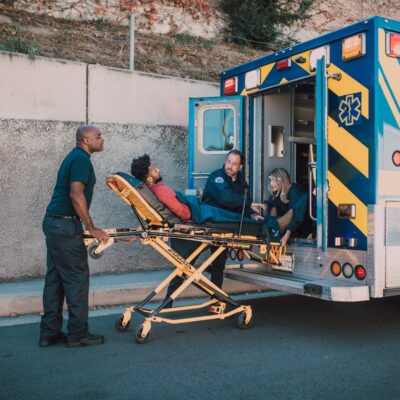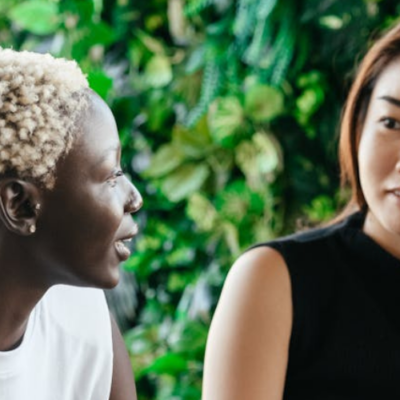Topics in CJ/MH: Mental Illness and Violence
Tragic incidents involving people with mental illnesses who are violent, although rare, tend to draw intense media and public attention. This can exacerbate existing misperceptions about the relationship between mental illness and violence.
This feature highlights some key points regarding the relationship between mental illness and violence. It draws on the findings of a recently published toolkit designed to help policymakers and practitioners respond to tragic events in their communities involving a person with a mental illness. Written by the…
Tragic incidents involving people with mental illnesses who are violent, although rare, tend to draw intense media and public attention. This can exacerbate existing misperceptions about the relationship between mental illness and violence.
This feature highlights some key points regarding the relationship between mental illness and violence. It draws on the findings of a recently published toolkit designed to help policymakers and practitioners respond to tragic events in their communities involving a person with a mental illness. Written by the CSG Justice Center and the National Association of State Mental Health Program Directors, Responding to a High-Profile Tragic Incident Involving a Person with a Serious Mental Illness includes a fact sheet, background information, and a literature review on the connection between mental illness and violence. For a free download, click here.
“The toolkit underscores the benefit to working collaboratively with journalists; family, consumer, and victims’ advocates; and experts in the field and first responders to ensure information is accurately and appropriately shared without undermining ongoing investigations,” said Fred Osher, MD, Director of Health Systems and Services Policy for the Justice Center.
What We Know about Mental Illness and Violence
The relationship between mental illness and violence is complex. Most people with mental illnesses are not violent, and most people who are violent are not mentally ill.R.A. Friedman, “Violence and Mental Illness—How Strong is the Link?” New England Journal of Medicine, 355(20) (2006): 2064–66. In fact, people with serious mental illnesses are anywhere from 2.5 to 12 times more likely to be the victims than the perpetrators of violence. L.A. Teplin, G. M. McClelland, K.M. Abram, and D. A. Weiner, “Crime Victimization in Adults with Severe Mental Illness: Comparison with the National Crime Victimization Survey,” Archives of General Psychiatry, 62 (2005): 911–21.
A fairly large body of research indicates that factors other than mental illness itself relate to violent behavior. Substance abuse significantly increases the risk for violence, regardless of a person’s mental health status.C. Fulwiler, H. Grossman, C. Forbes, and R. Ruthazer, “Early-onset Substance Abuse and Community Violence by Outpatients with Chronic Mental Illness,” Psychiatric Services, 48(9) (1997): 1181–85. Other factors associated with violent behavior include being young, male, or of low socioeconomic status.J. W. Swanson, C. E. Holzer, V. K. Ganju, and R. T. Jono, “Violence and Psychiatric Disorder in the Community: Evidence from the Epidemiologic Catchment Area Surveys,” Hospital and Community Psychiatry, 41(7) (1990): 761–70.
Violence in a person with a mental illness cannot be predicted. Although violence risk assessment instruments do exist, they generally do not indicate why a person is high or low risk. Also, even knowledge of a factor that increases risk cannot necessarily be used to prevent an incident before it occurs. Furthermore, most observers believe it is neither practical nor useful to screen every person seeking treatment for a mental illness for violence.
Research is inconclusive about the extent to which specific interventions for people with mental illnesses who are at risk of violence can prevent future violence. Some violence among people with serious mental illnesses is associated with their not taking medications; therefore, it is critical to ensure access to medications and strategies that improve adherence (such as patient education). Some violence is related to co-occurring substance use disorders, so access to integrated mental health and substance abuse treatment is needed.
A common misperception among the general public is that a mentally ill stranger will become violent. The public should not fear being harmed by a stranger with a mental illness. Studies indicate that violence committed against strangers is rare. The people most likely to be the targets of violence by a person with (or without) a mental illness are family members and friends.
Additional Resources
The authors of the toolkit, along with the director of mental health for the Illinois Department of Human Services, presented on the subject of mental illness and violence in a recent webinar; click here to download the webinar.
Find other events
You might also be interested in
In response to growing calls for police reform in New Jersey, particularly following the shootings of Najee Seabrooks…
Read More Apply Now: Join a Learning Community for Community and Crisis Response Teams to Improve Responses to Youth
Read More
Apply Now: Join a Learning Community for Community and Crisis Response Teams to Improve Responses to Youth
Read More
 Apply Now: Join a Learning Community Focused on Substance Use and Overdose Community Response Programs
Read More
Apply Now: Join a Learning Community Focused on Substance Use and Overdose Community Response Programs
Read More


















